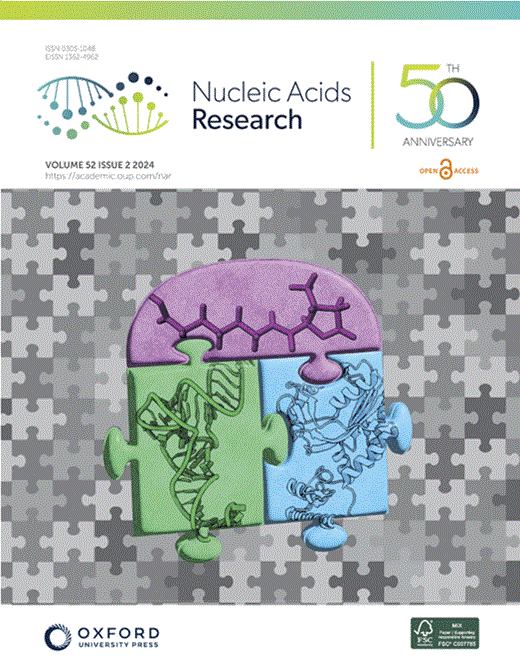Methylation of mycovirus DNA is mediated by the RNAi machinery in vegetative hyphae of Fusarium graminearum
IF 16.6
2区 生物学
Q1 BIOCHEMISTRY & MOLECULAR BIOLOGY
引用次数: 0
Abstract
DNA cytosine methylation is an important epigenetic mechanism for transposon silencing and gene regulation in fungi, particularly during sexual reproduction. However, its occurrence in vegetative hyphae and role in defense against mycoviruses is unclear. In this study, we demonstrated that genomic-wide cytosine methylation of the tripartite genomovirus FgGMTV1 occurs in the hyphae of Fusarium graminearum, a destructive pathogen of wheat and barley worldwide. Elevated methylation levels were predominantly observed in the promoter regions of FgGMTV1, with the highest level reaching 55.87% in the DNA-C fragment MeC5. Methylation of the Rep promoter in DNA-A was showed to be mediated by DNA methyltransferase DIM2 and lead to its transcriptional activity suppression, resulting in a significant reduction in virus accumulation. Furthermore, we uncovered that small RNAs (sRNAs) derived from FgGMTV1 direct the methylation of viral DNA and integrated foreign promoters, which requires the core components of the RNAi machinery, including the Ago and Dicer genes. Deletion of dcl1/2 or ago1/2 in FgGMTV1-infected strains resulted in an increase in virus accumulation and defects in hyphal growth, stress response, and plant infection. Taken together, our findings reveal that RNAi-mediated DNA methylation occurs in vegetative hyphae and plays a crucial role in antiviral defense mechanisms in fungi.在小麦镰刀菌营养菌丝中,RNAi机制介导了分枝病毒DNA的甲基化
DNA胞嘧啶甲基化是真菌转座子沉默和基因调控的重要表观遗传机制,特别是在有性生殖过程中。然而,目前尚不清楚其在营养菌丝中的发生情况及其在防御分枝病毒中的作用。在这项研究中,我们证明了三方基因组病毒FgGMTV1的全基因组胞嘧啶甲基化发生在小麦镰刀菌的菌丝中,镰刀菌是小麦和大麦的破坏性病原体。甲基化水平升高主要发生在FgGMTV1的启动子区域,其中DNA-C片段MeC5的甲基化水平最高,达到55.87%。DNA- a中Rep启动子的甲基化是由DNA甲基转移酶DIM2介导的,并导致其转录活性受到抑制,导致病毒积累显著减少。此外,我们发现来自FgGMTV1的小rna (sRNAs)指导病毒DNA和整合的外来启动子的甲基化,这需要RNAi机制的核心组件,包括Ago和Dicer基因。在fggmtv1感染的菌株中,dcl1/2或ago1/2的缺失导致病毒积累增加,菌丝生长、胁迫反应和植物侵染出现缺陷。综上所述,我们的研究结果表明,rnai介导的DNA甲基化发生在营养菌丝中,并在真菌的抗病毒防御机制中起着至关重要的作用。
本文章由计算机程序翻译,如有差异,请以英文原文为准。
求助全文
约1分钟内获得全文
求助全文
来源期刊

Nucleic Acids Research
生物-生化与分子生物学
CiteScore
27.10
自引率
4.70%
发文量
1057
审稿时长
2 months
期刊介绍:
Nucleic Acids Research (NAR) is a scientific journal that publishes research on various aspects of nucleic acids and proteins involved in nucleic acid metabolism and interactions. It covers areas such as chemistry and synthetic biology, computational biology, gene regulation, chromatin and epigenetics, genome integrity, repair and replication, genomics, molecular biology, nucleic acid enzymes, RNA, and structural biology. The journal also includes a Survey and Summary section for brief reviews. Additionally, each year, the first issue is dedicated to biological databases, and an issue in July focuses on web-based software resources for the biological community. Nucleic Acids Research is indexed by several services including Abstracts on Hygiene and Communicable Diseases, Animal Breeding Abstracts, Agricultural Engineering Abstracts, Agbiotech News and Information, BIOSIS Previews, CAB Abstracts, and EMBASE.
 求助内容:
求助内容: 应助结果提醒方式:
应助结果提醒方式:


